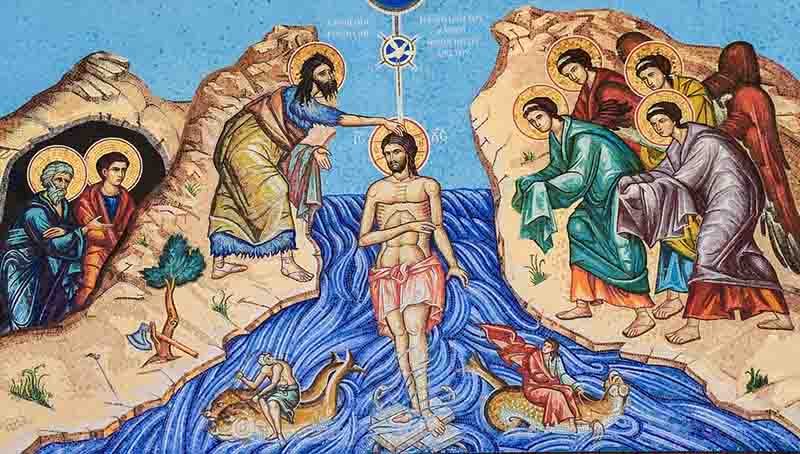
The Origins and Significance of Baptism
The Old Testament describes the immersion in water for the purpose of purification and cleansing but there is no mention of the word baptism.
“It must be put in water, and it shall be unclean until the even; so it shall be cleansed.”
Leviticus 11:32
In the days of the First Temple, dipping objects in water was a limited practice, a marginal aspect of daily Jewish life in the Land of Israel. The few instances when people bathed for the purpose of purification were clear-cut cases of contamination, such as leprosy.
For this purpose, one could bathe in any natural water, such as a sea, a spring or a river. Thus Elisha suggests that Naaman, captain of the Syrian army, who suffered from leprosy, immerse himself in the Jordan:
“Then went he down, and dipped himself seven times in Jordan, according to the saying of the man of God: and his flesh came again like unto the flesh of a little child, and he was clean.”
2 Kings 5:14
When the Jewish nation moved to Babylon, under the leadership of Ezra and Zerubavel, the interest in purification grew. Man-made purification baths came into use during the Hasmonean rule. The daily religious use of such baths was the result of the adoption (conscious or not) of various Hellenistic customs. The earliest evidence of the notion that immersion in water purifies a person of sin is traced to the Judean Desert cult (the Essenes), which opposed the Hellenistic influence on holy life in Jerusalem, particularly on the priesthood. In their view, such purification was possible only for themselves, the “sons of the light.”
Baptism of Christ in the Jordan
John’s baptism was essentially different. In contrast to the insulated cult of the Judean Desert,
“The whole Judean countryside and
all the people of Jerusalem went out to him.
Confessing their sins, they were baptized
by him in the Jordan River”
Mark 1:5
John’s baptism was the basis of Christian baptism, which is meant for everyone, and is preceded by a personal confession.
The baptism of Jesus, who was free of all sin, was a sign of his revelation as the Messiah, and the beginning of his missionary work The sign was not the baptism itself, but the descent of the Holy Spirit afterwards, when Jesus began to pray, accompanied by a voice from heaven:
“You are my Son, whom I love; with you I am well pleased”
Luke 3:22
The church baptism of the believer is not a simple imitation of Jesus’ baptism by John. Jesus himself notes the importance of water to the rebirth of the believer
: “… no one can enter the kingdom of God
unless he is born of water and the Spirit”
John 3:5.
With the development of the Christian church, new believers were accepted to “Israel of the Spirit” through baptism. Converts were “reborn” of water and Spirit, entered a new life, adopted into the holy family and enlightened; they died and were resurrected with the Messiah, received forgiveness for their sins and began taking part in the Holy Spirit.
The baptismal rites conducted in the different Christian churches around the world today take a completely different form. In fact, they are all nuances of the simple immersion in the Jordan River.






